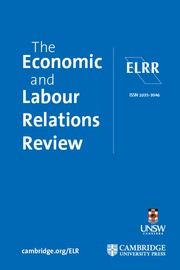No CrossRef data available.
Article contents
Death at Dreamworld: Ten pathways to disaster and failure to learn
Published online by Cambridge University Press: 06 September 2024
Abstract
Deaths in workplace incidents – of both workers and members of the public – normally spark a number of official responses, including coronial inquests. In many instances, however, these investigations have examined the incident in isolation from the wider context of hazards in that industry and are rarely informed by the extensive research literature on health and safety, and death and disaster, at work. In this examination of a tragic theme park disaster in 2016, we demonstrate that applying a wider lens and drawing on the ‘ten pathways model’ not only provides a more compelling explanation of how and why safety measures failed but may also inform more fatality and injury prevention measures. Drawing on James Reasonʼs concept of latent failures, the ten pathways model identifies latent failures that are repeatedly associated with death and disaster in workplaces across different industries. Using the Dreamworld coronial inquest findings and other related source material, this paper finds that at least nine and possibly all ten pattern failures were present in the Thunder River Rapids ride disaster at the Dreamworld theme park and contributed to the deaths of four visitors. In particular, it highlights the corroding effects of poor maintenance, inadequate management systems, and regulatory failure. The paper also raises questions about why theme parks as high-hazard workplaces marked by injuries, deaths, and ‘near misses’ were not subject to more rigorous oversight prior to the event and how regulatory failures might best be addressed.
Keywords
- Type
- Original Article
- Information
- Copyright
- © The Author(s), 2024. Published by Cambridge University Press on behalf of The University of New South Wales


